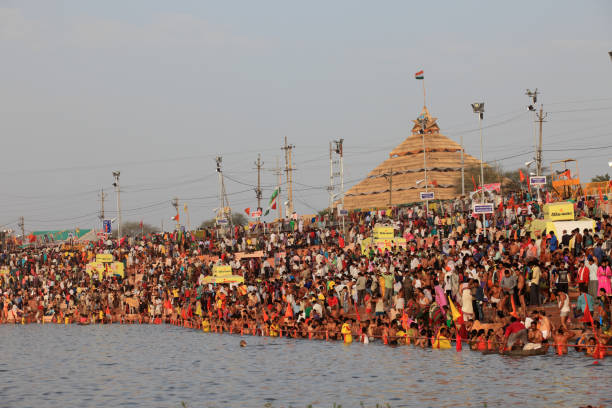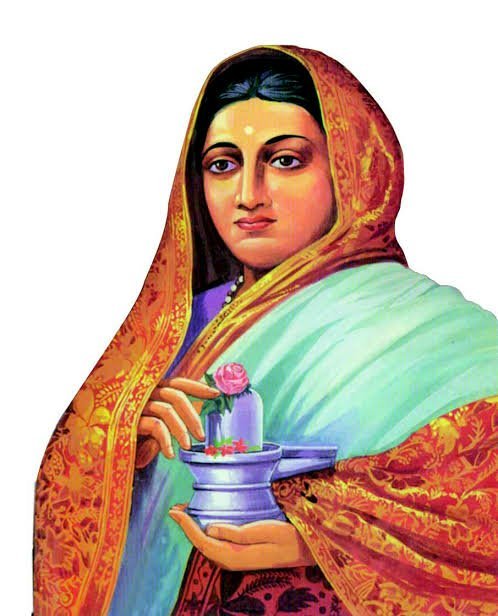Recently my wife Sudha and I visited Mathura and Vrindavan, two historical places closely related to Krishna’s childhood activities. The two towns are 11km apart, located on the bank of River Yamuna. The Delhi Agra Highway connects them both to Delhi and other major towns and cities. While travelling from Delhi, one has to pass through three road-toll booths during around 3.5-hour trip.
Lord Krishna was born in a prison cell in Mathura. Kansa, the king of Mathura, had imprisoned his parents, father Vasudev and mother Devaki. Kansa had usurped power from his own father Ugrasen who ruled his kingdom from the capital Mathura. Krishna’s parents were imprisoned to evade the forecast that their eighth son would kill Kansa.
Krishna was taken to Gokul by his father immediately after his birth and transferred to the care of Nanda Maharaj. There, Krishna was brought up by mother Yashoda and Nanda Maharaj. Later Nanda Maharaj along with Krishna, relatives and associates moved to Vrindavan to avoid ongoing harassment by Kansa. Krishna performed childhood activities in and around Vrindavan, which are recorded in detail by poets, devotees and religious scholars.
Other important sites in this region, which is also known as Brajabhumi, are Nandgaon where Nanda Maharaj used to live, and Barasana where Radha, the well-known Gopi lover of Krishna, was born. Mathura and Vrindavan are the largest and most well known towns in Brajabhumi. Mathura is a district town with district head quarter and industrial complexes including an oil refinery. Vrindavan is the major pilgrimage centre, especially for the followers of Krishna-based Vaishnava tradition of Hinduism.
The earliest reference to Mathura is found in the Ramayana. During the rule of Lord Ram, his brother Shatrughna was sent to quell the rebellion headed by Lavanasur in this region. Shatrughna established a centre named Madhuvan to administer the region. Later it was known as Madhupura and then as Mathura.
Mathura became the capital of the Surasen kingdom; the same to which king Ugrasen and Kansa belonged. It remained a major political and religious centre. The Greek traveller Megasthenes and Chinese traveller Faxian mentioned Mathura in their writings. During Faxian’s visit, Mathura was a major Buddhist centre.
Mathura is one of the seven sacred cities in India, the others being Ayodhya, Haridwar, Varanasi, Kanchi, Ujjain and Dwarka. A large number of temples are spread all over Mathura, including Krishna Janmabhumi temple, Dwarkadhish temple and Keshav Deo temple.
Among all the temples, the Krishna Janmabhumi temple is the oldest and has a long history of destruction and reconstruction. The original temple was built by the great grandson of Krishna at the site of Krishna’s prison birthplace. During the dominance of Buddhism in India, the temple went into disrepair. After decline of Buddhism, king Chandragupta II restored the temple to its previous glory.
The temple was destroyed and rebuilt many times during the Islamic rule over India. The latest destruction of the temple was done by the order of Aurangajeb. The temple was demolished in 1670 AD and a mosque was built at its site. During the British rule, a part of the site was auctioned by the East India Company, and was bought by the king of Varanasi. The construction of the modern temple on the auctioned site, located beside the mosque, was completed in 1965.
Thorough security checks are conducted on every tourist entering the Krishna Janmabhumi temple complex. All belongings including cameras, phones and bags are to be deposited at the entry gate. It remains a sensitive temple, like Shree Ram Janmabhumi temple complex in Ayodhya and the partly demolished Vishwanath temple currently used as a mosque in Varanasi.
Mathura is also famous for it museum, the Government Museum. It is a leading museum that houses ancient sculptures, pottery, paintings and coins belonging to between 3rd century BC to 12th century AD recovered from the region.
Vrindavan is a small town with a population of around 63,000 (2011). Vrinda means Tulsi or basil plant, and Van mean grove. The name of the place indicates that its area may have been full of basil plants in ancient times.
Lord Krishna spent his childhood in and around Vrindavan. The famous Govardhan Mountain and River Yamuna lie in close proximity to the town. Being related to Krishna’s activities, a large number of temples dedicated to Krishna are located in this region, including the Bankey Bihari temple, Radha Damodar temple, ISKCON temple and Prem Mandir. Temples dedicated to other deities, such as Vaishno Devi and Shiva are also available.
Bankey Bihari temple is the holiest and one of the most famous temples dedicated to Krishna. It attracts a large number of devotees. Its access is through narrow lanes. Local guides are helpful in facilitating Darshan, viewing of the deity.
Prem Mandir and ISKCON temples are modern constructions accessible from the Bhaktivedanta Swami Marg. Prem Mandir is built of marble on a 54-acre site. Kripalu Maharaj, a well known Krishna’s devotee, established this complex. The ISKCON temple is also a large marble temple located on a sizeable site. The temple complex includes many other structures including a park, residential buildings and other support facilities. From the Bhaktivedanta Swami Marg, one can access Vaishno Devi Mandir. A huge statue of Vaishno Devi on her mount, a lion, can be seen from the road. In addition, there are many other temples built and managed by different sects of Hinduism.

Vrindavan is mentioned in religious texts of antiquity. Vallabhacharya (1479–1531 AD), a Vaishnava philosopher, restored the status of Vrindavan as a major pilgrimage centre. He founded the Krishna centred sect of Vaishnavism. He used to stay there for four months each year. Chaitanya Mahaprabhu, who also preached Krishna based tradition, visited Vrindavan in 1515. With his divine spiritual powers, he was able to locate through his devotees all the important places of Krishna’s childhood in and around Vrindavan. Mira Bai, a famous spiritual poet, spent her last fourteen years of life in a temple in Vrindavan.
Vrindavan had been an important place for widows who were sent there by family members to spend their time in spirituality. This practice has sometime resulted in their maltreatment.
A lot of monkeys roam around Vrindavan streets. One should be careful with their possessions, especially hats, shaded glasses and mobile phones. Vrindavan has changed from a basil grove to a town like many other places in India due to urbanisation.
Many people visit Vrindavan to get initiated into a religious tradition by a spiritual Guru. Vrindavan is now a major international tourist destination thanks to ISKCON and other Krishna centred traditions.










